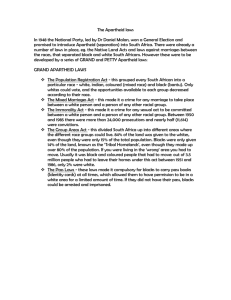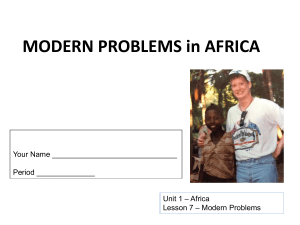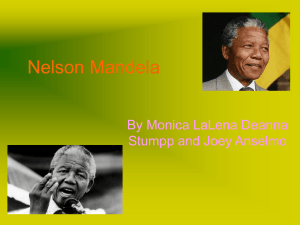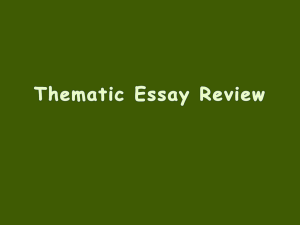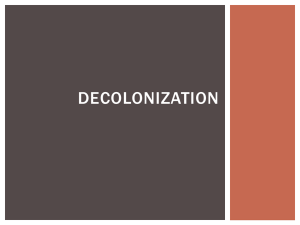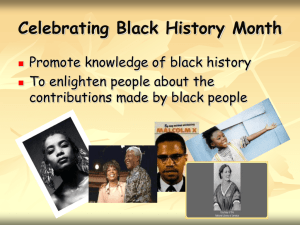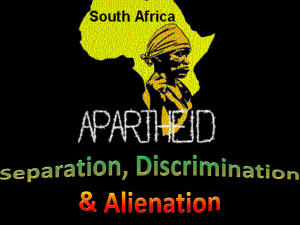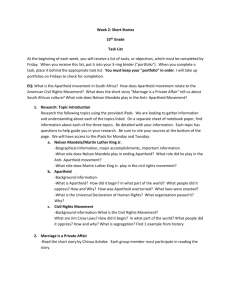apartheid in south africa
advertisement
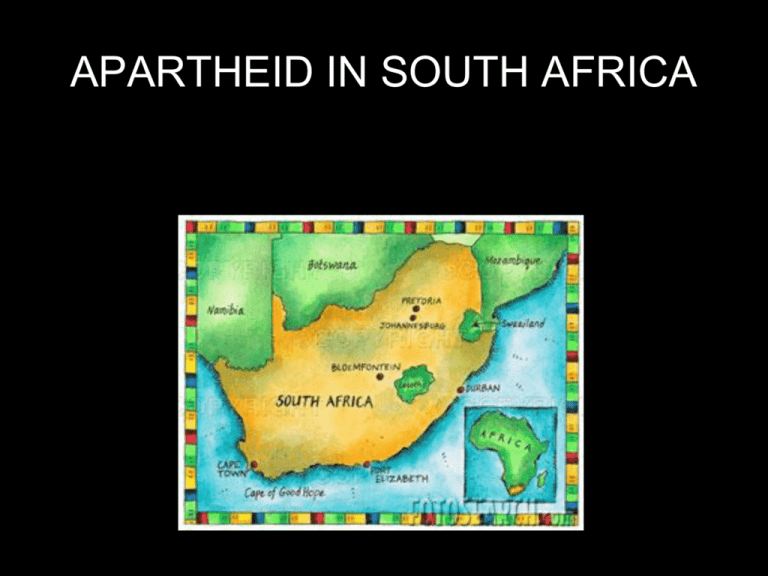
APARTHEID IN SOUTH AFRICA UNION OF SOUTH AFRICA • Created in 1910 (power in the 17% white population) • 70% African blacks NO VOTE • Coloreds (mixed race) and Asians could vote but only for white representatives • ‘BOER’ or AFRIKANERS formed the majority. (Netherlands) AFRIKANER NATIONAL PARTY 1948 • Promise: rescue from the ‘Black menace’ • Dutch Reform Church promote racial inequality • Some members support Nazi and Fascist views of race • Church promotes idea that blacks should be servants; whites were the master races, • Whites fear events in India, Pakistan and promotion of racial equality due to WW II. • Whites afraid of Communism (ANC—African National Congress—a black political movement was viewed as communist) APARTHEID • ANP creates system of separate development or ‘SEGREGATION’ in law. • Population Registration Act- classified all people into racial groups from birth • Whites only group regarded as citizens of South Africa • Group Areas Act- blacks expelled from whites only areas placed on reserves and their former homes were demolished • Bantu Self-Government Act- sets up eight selfgoverning regions called ‘BANTUSTANS’ ‘ HOMELANDS’ • Bantustans 14% of land holds 80% of the population • Segregation in: transport, schools, churches, beaches, sports, health facilities and so on 1982 ENFORCEMENT OF APARTHEID • Pass Laws- all ‘non-whites’ had to carry passes so police could control them No marriage or sex between races. • Suppression of Communism Act- anyone who promoted end to apartheid labeled a communist arrested without charges, rigged trials, torture and imprisonment • Black workers forbidden to strike some flogged, no unions, • Bantu Education Act- promotes low level of education 10 cents of every dollar spent on black child while 90 cents spent on white child. All blacks were required to carry ``pass books'' containing fingerprints, photo and information on access to non-black areas. PROBLEMS OF APARTHEID • Blacks live in appalling living conditions • Townships lack basics of sanitation, water and electricity • Schools lack books and teachers • Men are migrant workers live in hostels away from home (causes family breakdown) • Vicious cycle of poverty, crime and drunkenness THE SHARPEVILLE MASSACRE, March 1960 • Blacks assembled in the Sharpeville police station to protest the pass laws. • Supposed to be a peaceful demonstration. Nelson Mandela one of the leaders. • Police gathered, but soon the crowd pelted the policemen with stones, and the edgy policemen retaliated with gunfire. • In the end, sixty-nine protesters were killed and one hundred and eighty were wounded (some shot while trying to flee). SOWETO MASSACRE • "They opened fire. They did not give any warning. They simply opened fire. Just like that. Just like that. And small children, small defenseless children, dropped down to the ground like swatted flies. This is murder, coldblooded murder." • A series of youth riots in Soweto, South Africa in June 1976. • Issue: government stipulated certain high school subjects taught in Afrikaans. • Started off peacefully with 3-10 thousand students marching • Route blocked, tear gas used, semi-automatic weapons, and sniper guns. • 23 died on the first day, over 575 in total • Established ANC as primary instrument of reform. No longer peaceful. • Youth leader Steven Biko arrested and beat to death in jail OUTSIDE PRESSURE • UN organizes boycotts of white South Africa • Commonwealth and African states pressure for change • International boycotts, economic dealings, sporting bans, diplomatic pressure to release Mandela • International churches attack apartheid • Dutch Reform Church changes its policy and ends support to apartheid DESMOND TUTU • • • • Leader of church campaign to end apartheid Promotes release of Mandela from jail Wants non-violence between whites and blacks Leader of the TRUTH AND RECONCILIATION COMMISSION after Mandela became President. Force for peaceful change BOTHA • President 78-89 abolishes pass laws, marriage laws and segregation “too little too late” • Warns whites to change “adapt or die” DE KLERK • • • • Became president after Botha Releases Mandela from jail Mandela calls of armed struggle Sets up Convention for Democratic South Africa with De Clerk • Seventy percent of whites support De Klerk and his policies MANDELA • Leader of the ANC (jailed for 30 years) • Installed as president in 1994 (one person one vote) • Sets up Government of National Unity PROBLEMS FACING MANDELA • Poverty, violence, racial tension, tension between tribes • Mandela had to win the confidence of white business community • Had to win over foreign investors • Passed new constitution on basis of majority rule • De Clerk’s National Party leaves government and becomes ANC’s opposition Thabo Mbeki ’99 to present
